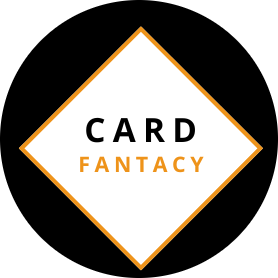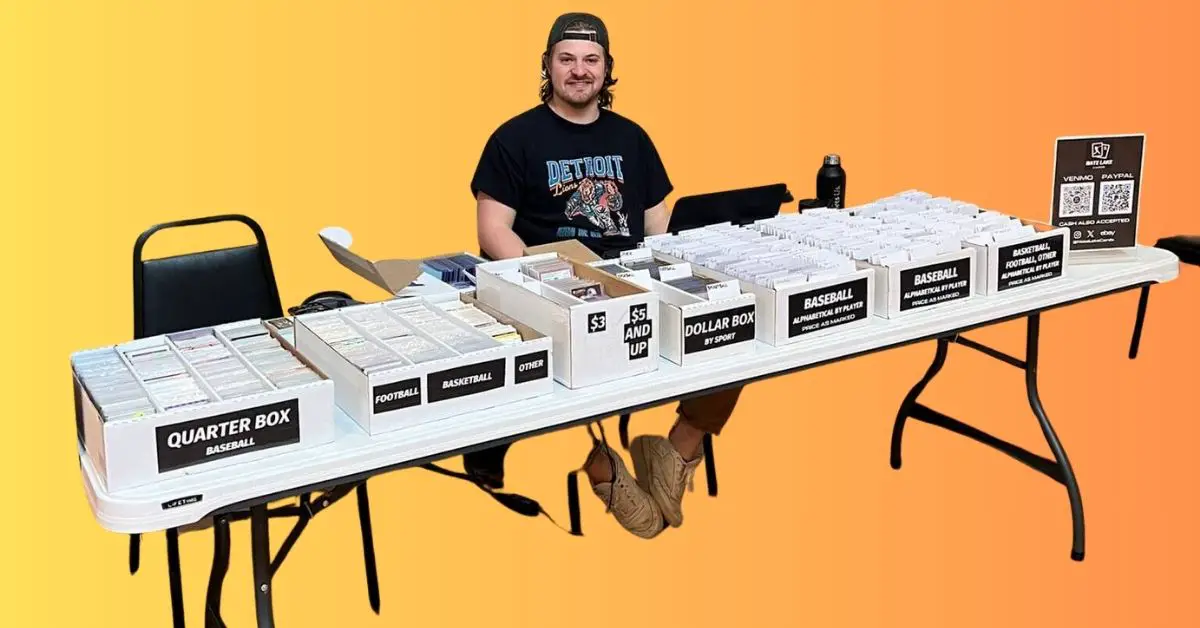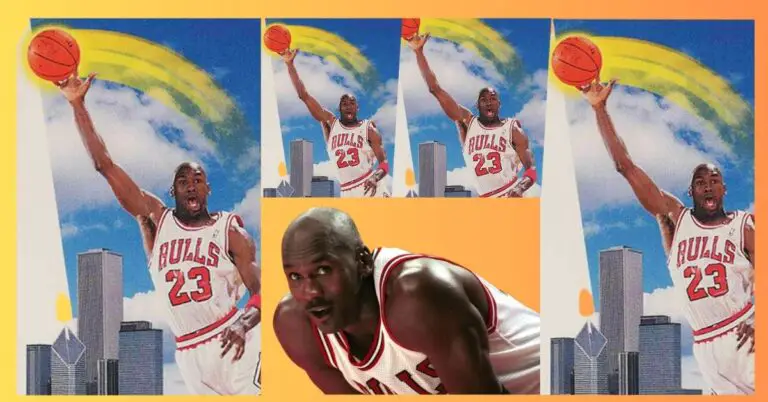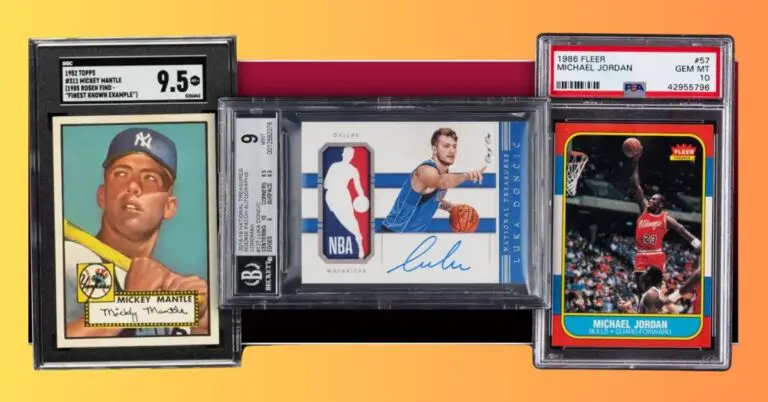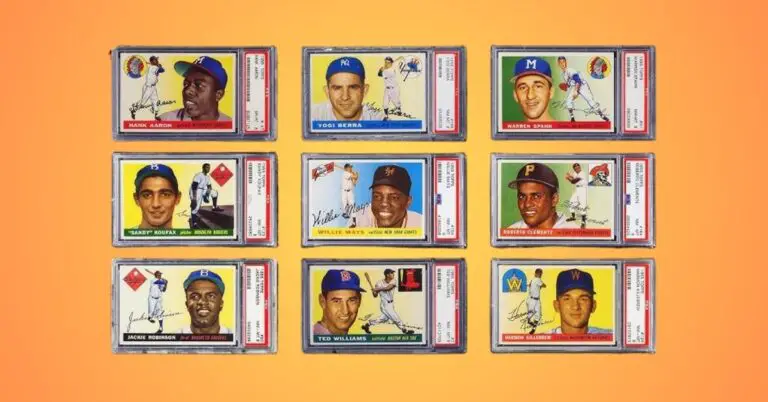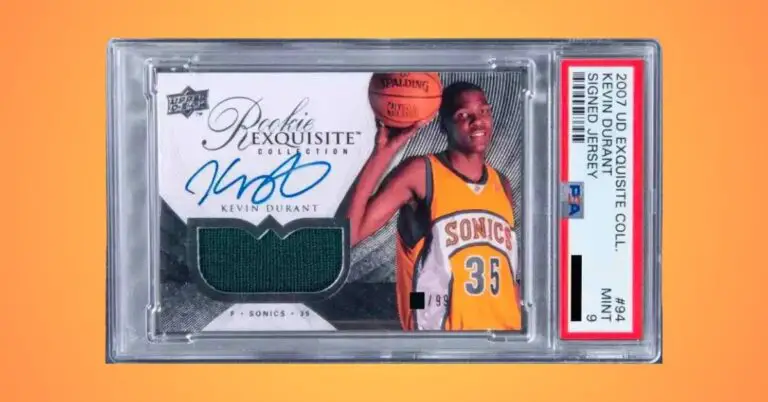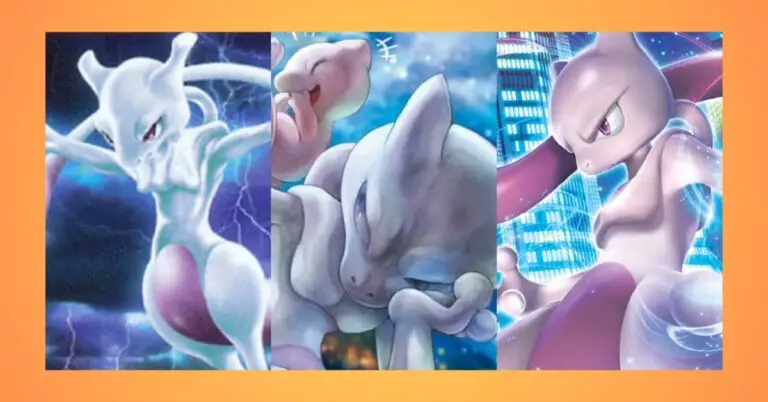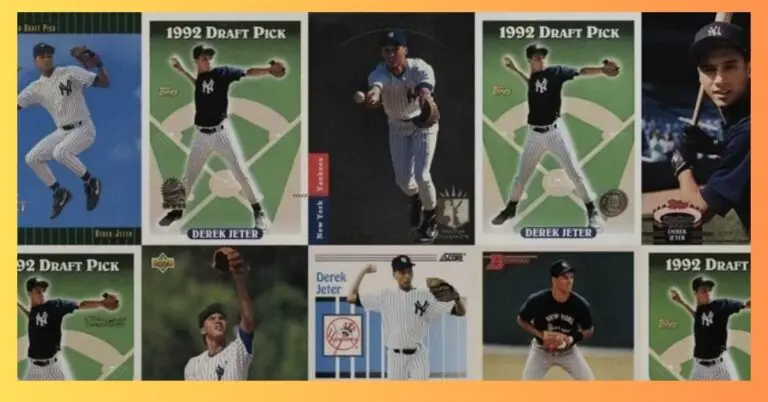How to Sell at a Card Show? | Tips From My First Dealer Experience
Ready to transform your card collection into cash? Discover How to Sell at a Card Show with insider tips from my very first dealer experience. This guide offers essential tips for selling cards and practical advice on how to sell cards effectively.
From setting up your booth to closing deals, learn the strategies that will make your card-selling journey a breeze. Dive in and get ready to turn your passion into profit.
The Journey to My First Card Show
For about 10 months, I have been building my eBay store, Nate Lake Cards, which has grown steadily. I have forged relationships with local card enthusiasts most notably the owner of my local card shop. His mentorship has been invaluable and it was his encouragement that led me to take the plunge and set up a table at a local card show.
When I first mentioned my interest in setting up at the show. I was told it was full but there might be a chance if someone canceled. I was thrilled when just a few days before the show. I got the call: a spot had opened up, and it was mine. The excitement was quickly followed by panic. I had never done this before and had only a few days to prepare.
I had the time and determination to make the most of this opportunity. Here’s how I got ready, what I learned, and how you can apply these lessons to your first show.
How to Sell at a Card Show? | Tips
Selling at a card show is an exciting way to connect with fellow collectors, showcase your best cards, and make some money. Here are some essential tips for selling at card shows that can help you make the most of your experience:
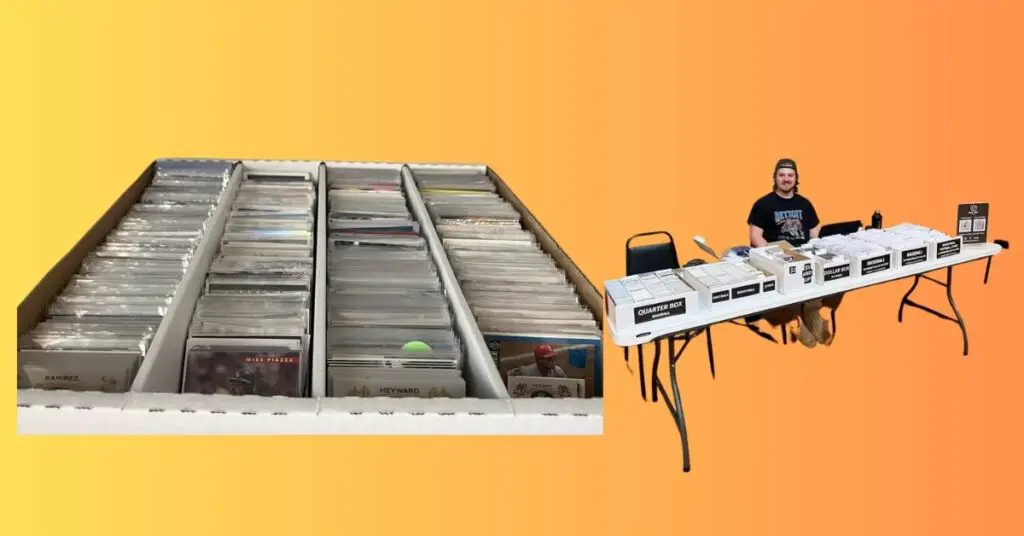
- Researching Market Prices: Before the show, I spent considerable time researching how much to sell my basketball cards for and the most valuable baseball cards 1990s.This research helped me price my items competitively and attractively.
- Utilizing Grading Services: Grading services like BGS can add significant value to your cards. I had some of my high-value cards graded by BGS, which made them more appealing to buyers. Knowing the different grades and how they affect value is essential when selling cards.
- Selling Common Cards: High-value cards get a lot of attention, and selling common baseball cards individually on eBay can also be profitable. I found that having a mix of high-value and common cards catered to a wider audience. Tips for selling baseball cards include being patient and understanding the market demand for different types of cards.
- Displaying and Marketing: Effective display and marketing can attract more buyers. I used clear signage to highlight sports card release dates and special deals. This approach drew in collectors looking for specific cards and those interested in new releases.
- Engaging with Buyers: Engagement is key to sales. I made it a point to talk to every visitor at my booth, sharing stories about my collection and learning about their interests. This personal touch often led to sales and repeat customers.
- Digital Payments and Online Sales: Different digital payment options and selling cards individually on eBay can expand your reach. I found that offering multiple payment options and maintaining an online presence helped increase my overall sales.
- Evaluating and Adjusting: After each show, I evaluated my sales and adjusted my strategy. This included changing my display layout, adjusting prices, and refining my negotiation tactics. Continuous improvement is key to long-term success.
Getting Ready for the First Show
Preparing for my first card show as a dealer was both exciting and nerve-wracking. After years of collecting sports cards, including some of the most valuable baseball cards 1990s. I was eager to share my collection and interact with fellow enthusiasts.
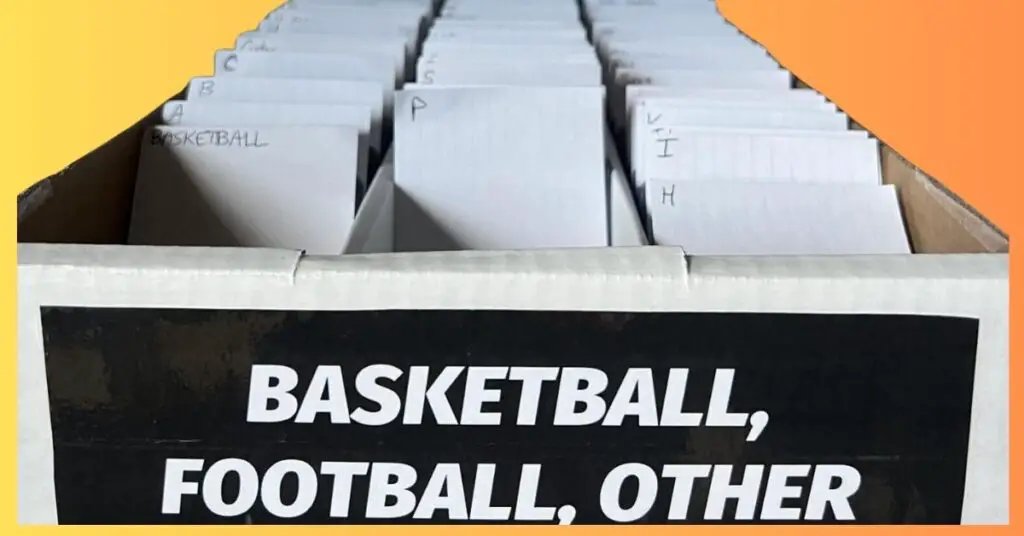
The preparation involved was extensive, but the experience was immensely rewarding. Here’s a detailed account of my journey, along with practical tips and advice for those getting ready for their first card show.
Inventory Organization
The first steps in preparing for the card show was organizing my extensive collection. Proper organization was essential to ensure a smooth setup and an efficient sales process at the show. Here’s how I categorized my cards:
- Quarter Boxes: To cater to collectors looking for bargains, I prepared two 4-row quarter boxes:
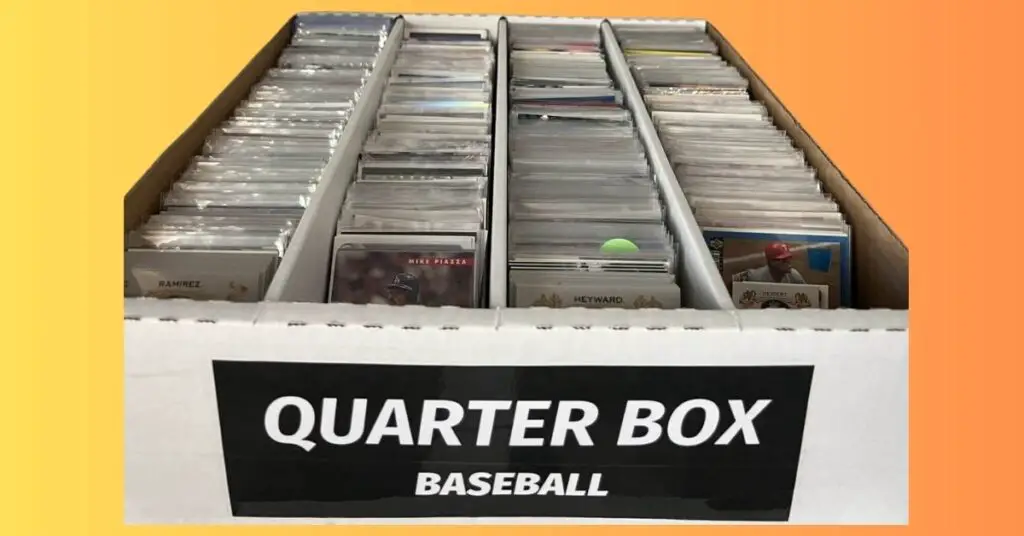
One box is dedicated to baseball cards. Another box contains a mix of basketball, football, and miscellaneous cards. These quarter boxes were popular among casual collectors and kids looking for affordable options.
- Dollar Box: I also organized a dollar box with various sports cards:
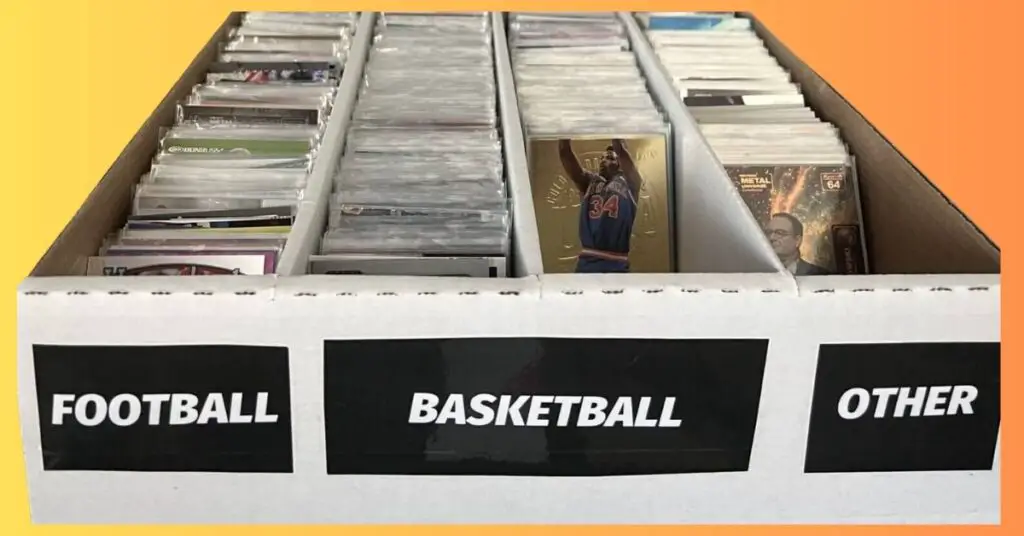
This box contained baseball, basketball, football, and other cards, each separated with dividers. The dollar box offered a great way to attract buyers interested in mid-range cards without breaking the bank.
- $3/$5 & Up Box: For collectors looking for higher-value cards, I prepared a two-row box:
One row contained $3 cards, divided by sport. The other row featured my more expensive cards ($5 and up), each individually priced with stickers.
This setup allowed me to showcase some of the more valuable items in my collection while keeping them organized and easy to browse.
- Alphabetical Boxes: To make finding specific players easier, I organized two three-row boxes:
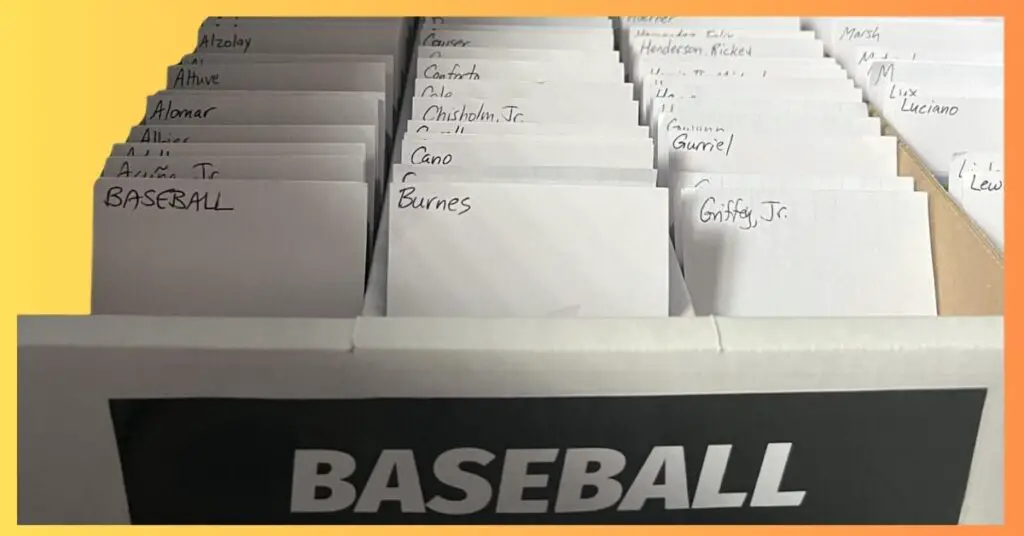
Two boxes dedicated to different cards. One box for basketball, football, and other cards, all sorted alphabetically by player name.
Pricing Strategies
Pricing my cards appropriately was crucial to attracting buyers. I spent considerable time researching how much to sell my basketball cards for and the current market values of my most valuable baseball cards 1990s. Websites like Beckett Card Grading and eBay’s sold listings were invaluable resources.
Competitive pricing is key to attracting buyers. For high-value items, I used price stickers or labels to make the asking price clear. I created bargain bins for common cards with clear signage indicating the price per card.
Display Arrangements
A well-organized display can significantly impact your sales at a card show. I chose a mix of card stands, display cases, and binders to showcase my collection. High-value cards were prominently displayed in cases, while less valuable cards were neatly organized in binders or laid out on the table.
Ensuring that your cards are easily visible and accessible is crucial. I found that arranging my cards attractively drew more attention to my booth and made it easier for customers to browse.
Essential Supplies
Engaging with customers is crucial to making your first card show a success. Here we discuss few essential supplies in detail.
- Protective Gear: Protecting your cards is paramount. I brought an ample supply of top loaders, penny sleeves, and team bags. These items not only protect your cards but also give them a professional look.
- Table Setup: A professional-looking table setup can significantly enhance your booth’s appeal. I used a clean, attractive table cover and clear signage for pricing, deals, and promotions. Business cards are also a must for networking and building relationships with customers and other dealers.
- Business Necessities: Besides the obvious need for a cash box with change, I prepared to accept digital payments via PayPal, Venmo, and a card reader. In today’s digital age, offering multiple payment options can make the difference between making a sale or not.
Setting Up Your Booth: Layout Planning
The layout of your table is critical. I arranged my table to maximize visibility and accessibility. High-value items were placed prominently, and I ensured that there was a logical flow to how my cards were displayed.
Lighting: The lighting at the venue can be hit or miss, so I brought additional lighting to highlight my cards. Good lighting can make your cards stand out and attract more buyers.
Comfort Items: Comfort is often overlooked, but it’s crucial for a long day at the show. I brought a comfortable chair, snacks, and water to stay refreshed and focused.
Engaging with Customers
When preparing for your first card show, focusing on approachability, product knowledge, and negotiation tactics is key to making a strong impression and boosting your sales. Here we discuss key factors in detail.
- Approachability: Being approachable and engaging with customers is vital. I greeted attendees with a smile and was ready to engage in conversation. Building rapport with potential buyers can significantly increase your sales.
- Product Knowledge: Knowing the details and history of your cards can set you apart from other dealers. I made sure to be well-versed in the specifics of my inventory, which helped in engaging and convincing buyers.
- Negotiation Tactics: Negotiation is an art. I remained open to negotiating prices but always knew my minimum acceptable price. Being flexible while ensuring you get a fair price for your cards is a delicate balance.
Networking
Beyond just selling cards, the relationships you build at a card show can greatly impact your long-term success. Now here we briefly explain.
- Connecting with Other Dealers: Networking with other dealers can provide invaluable insights and opportunities. I learned a lot from their experiences and built relationships that could benefit me in future shows.
- Customer Relationships: Building relationships with customers is crucial for future sales. I collected contact information from interested buyers and made sure to follow up with them after the show.
Post-Show Follow-Up
Reflecting on your show experience and maintaining relationships is key to improving and thriving in future events. Here we discuss Post-Show Follow-Up essential points.
- Sales Evaluation: Evaluating your sales after the show is essential. I reviewed which items sold well and which did not, helping me adjust my strategy for future shows.
- Customer Follow-Up: Reaching out to new contacts and customers is a great way to maintain relationships and offer future deals. It shows that you value their business and are looking to build a long-term relationship.
- Planning for Future Shows: Taking notes on what worked and what didn’t is crucial for improving your performance at future shows. I made adjustments to my strategy based on my first experience and felt more prepared for my next show.
How to Sell at a Card Show? | Tips
Selling at a card show is an exciting way to connect with fellow collectors, showcase your best cards, and make some money. Here are some essential tips for selling at card shows that can help you make the most of your experience:

- Researching Market Prices: Before the show, I spent considerable time researching how much to sell my basketball cards for and the most valuable baseball cards 1990s.This research helped me price my items competitively and attractively.
- Utilizing Grading Services: Grading services like BGS can add significant value to your cards. I had some of my high-value cards graded by BGS, which made them more appealing to buyers. Knowing the different grades and how they affect value is essential when selling cards.
- Selling Common Cards: High-value cards get a lot of attention, and selling common baseball cards individually on eBay can also be profitable. I found that having a mix of high-value and common cards catered to a wider audience. Tips for selling baseball cards include being patient and understanding the market demand for different types of cards.
- Displaying and Marketing: Effective display and marketing can attract more buyers. I used clear signage to highlight sports card release dates and special deals. This approach drew in collectors looking for specific cards and those interested in new releases.
- Engaging with Buyers: Engagement is key to sales. I made it a point to talk to every visitor at my booth, sharing stories about my collection and learning about their interests. This personal touch often led to sales and repeat customers.
- Digital Payments and Online Sales: Different digital payment options and selling cards individually on eBay can expand your reach. I found that offering multiple payment options and maintaining an online presence helped increase my overall sales.
- Evaluating and Adjusting: After each show, I evaluated my sales and adjusted my strategy. This included changing my display layout, adjusting prices, and refining my negotiation tactics. Continuous improvement is key to long-term success.
Selling Common Baseball Cards on eBay Individually
Selling cards individually on eBay can be both a rewarding and a time-consuming process. Here’s a comprehensive guide on how to do it effectively.
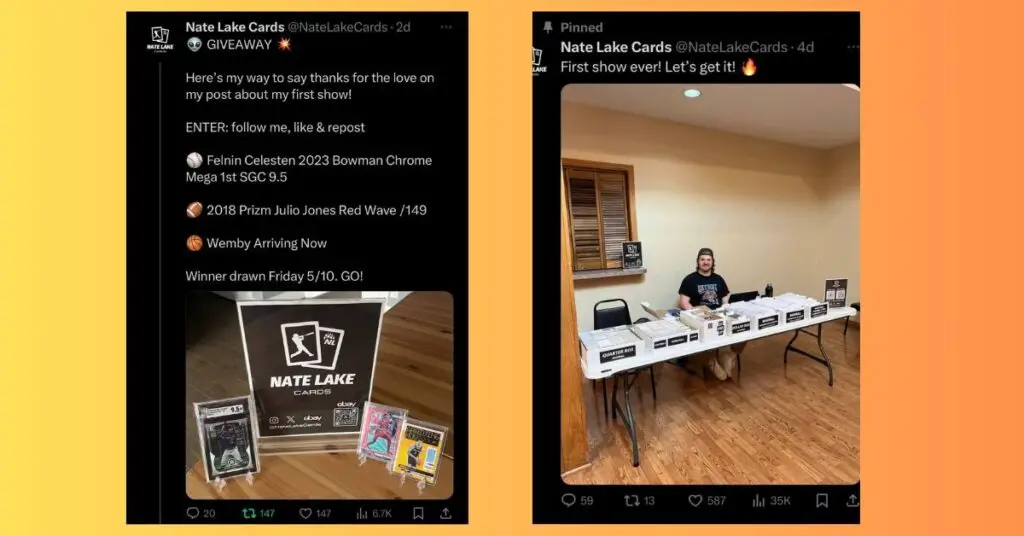
The crucial aspects of selling cards individually on eBay is providing detailed descriptions. Buyers want to know exactly what they are purchasing, including the card’s condition, year, player, and any notable features.
Taking the time to write clear and thorough descriptions can significantly increase your chances of making a sale. Mention any wear and tear, centering issues, or other imperfections. Honesty in your descriptions will build trust with potential buyers.
Final Discussion
Wrapping up my first dealer experience, I have learned that how to sell at a card show boils down to strategic preparation, engaging displays, and savvy pricing. Whether you’re wondering how to sell cards for top dollar or just trying to clear out inventory, these tips can help you stand out.
Remember, a well-organized table and confident negotiation skills are your ticket to success. Ready to sell like a pro? Start implementing these strategies at your next show.
FAQs
How Should I Engage with Visitors at my Booth?
Greet visitors warmly, be knowledgeable about your inventory, and offer special deals or promotions to encourage sales.
What are Some Negotiation Tips for Card Shows?
Be flexible with prices, know your bottom line, and offer bundle deals to encourage larger purchases.
How to Trade up at a Card Show?
To trade up at a card show, combine lower-value cards into attractive bundles and target specific high-value cards, negotiating smartly with dealers and collectors. Building relationships can also open doors to better trade opportunities.
What Kind of Customers Should I Expect?
Expect a mix of collectors, investors, and flippers, each with different buying motivations and negotiation styles.
Should I Offer Discounts Later in The Day?
Offering end-of-show discounts can help move leftover inventory. If you haven’t had many sales, consider negotiating lower prices in the final hours to clear stock.
